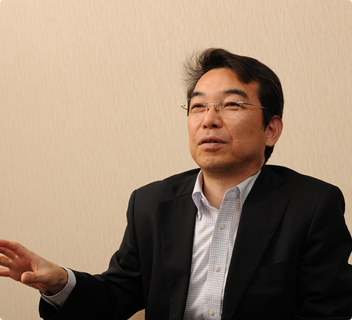Basic studies require 5 to 10 years before the birth of an innovative product.
I am not a 100% pure researcher dedicated to research in the laboratory only.

Firstly, let me ask about the IC steppers and scanners you are currently developing. I understand these are machines used to manufacture ICs by transferring electronic circuit patterns onto wafers. IC steppers and scanners are sometimes described as the highest-precision machines ever built. How are new products such as this developed at Nikon?
IC steppers and scanners are extremely precise and highly intricate machines. It is well known that, in the development of IC steppers and scanners, you have to innovate new technologies completely from scratch. Usually, it takes several years to commence shipping from when you start development of a new product. You may think that this is quite a long period, but in fact, the time allowed for development is very tight.
Do you supervise the whole development process until a new product is launched onto the market?
No, I am responsible for the early phase of development. My task is to create basic technologies and determine basic specifications. For the whole process, not only billions of yen but also several years of work are to be invested. Therefore, the basic strategy of development is extremely important. I conduct this crucial phase of the work with the key members of a project, through careful discussions among everybody involved.
So, your task concentrates on the early stages of development. It means there is still a long period of time before the finished commercial models are launched onto the market, doesn’t it?
The average time span is three years before our new products are first previewed for the market. Altogether, it takes 5 to 10 years before the mass-production models are introduced onto the market.
That’s quite a long time. The market conditions must undergo considerable changes before products are actually introduced.
Our products must match the needs of our customers at the moment they are delivered to the market. Therefore, our researchers need great foresight to imagine and predict the possible changes in the markets 5 to 10 years ahead of time.
How do you acquire and maintain your powers of prediction?
The best way is to visit customers, not just in Japan, but also overseas. It is, so to speak, market research. So my research is not confined only to the laboratory. In this sense, you may say I am not a 100% pure researcher dedicated to research in the laboratory. (Laughs) What is most important is hearing the voices of our customers, whose words and ideas accumulate to form a precious database in the long run. To this end, I exchange candid opinions with customers. The market should also be our field of study.
